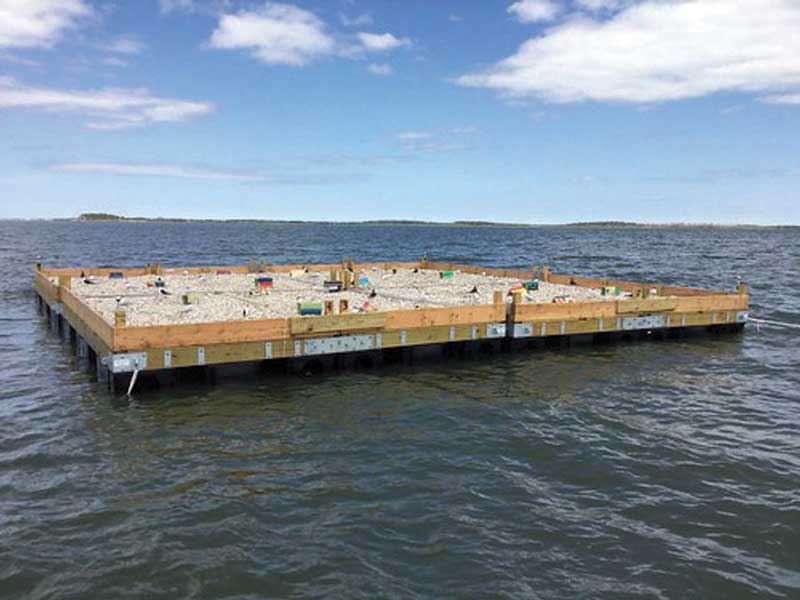The Maryland Department of Natural Resources (DNR), Audubon Mid-Atlantic, and Maryland Coastal Bays Program are partnering in research and monitoring efforts to preserve three of Maryland’s state endangered colonial nesting waterbirds—the common tern, royal tern, and black skimmer—through a nesting platform initiative.

Due to shoreline erosion and sea level rise in the coastal bays, populations of certain colonial nesting bird species have declined by a staggering 90-95 percent since the mid-80s. These species typically nest on islands in small colonies on barren beaches. The lack of suitable nesting area on these eroding islands has resulted in a loss of sufficient nesting areas for these populations to flourish.
“Island-nesting terns and skimmers in the Coastal Bays are in trouble and are on the cusp of being extirpated—or wiped out—from Maryland as breeding species,” explains director of bird conservation Dr. David Curson of Audubon Mid-Atlantic. “As suitable habitat for these birds dwindles from effects of a changing climate like shoreline erosion and sea level rise, it’s more important than ever to do what we can to keep them as part of the coastal ecosystem. We need a two-pronged strategy of ongoing sand management to maintain their natural islands to combat erosion and provide artificial habitat as an interim measure until the species populations are stable again.”
This year the group has undertaken a pilot project to establish an artificial island to imitate the characteristics of an ideal nesting beach for these birds. This project also uses a social attraction method that draws in seabirds to the platform with social cues, using bird decoys and audio recordings of bird calls. This model and technique have worked in other parts of the U.S., and in Canada and Europe, including restoring the puffin population in the Gulf of Maine.
The nesting platforms will be monitored throughout the season. If this project is successful, then consideration will be given to launch more in the following years to protect and preserve our diminishing colonial waterbird population. Roman Jesien, of the Maryland Coastal Bays Program states, “we hope that these nesting platforms work in the short-term while we continue our efforts to restore and conserve our natural islands for the long-term.”